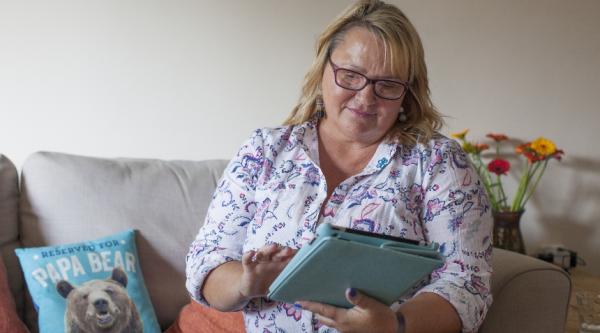How to obtain assistive technology
Find out where you can get assistive technology if you're living with dementia or supporting someone with the condition, as well as some things to consider.
- Using technology to help with everyday life
- What is assistive technology?
- Using technology
- How technology can help
- You are here: How to obtain assistive technology
- Assistive technology - useful organisations
Using technology to help with everyday life
There are a number of ways that you can get hold of assistive technology, including:
- Local authority needs assessments, which look at how a person’s care needs can be met. These will usually include looking at assistive technology devices and how they might be able to help.
For information on arranging one of these assessments, see our information for people in either England, Wales or Northern Ireland. - If you live in supported, sheltered or extra care housing, some housing providers may supply assistive technology. A number of private housing providers have built properties which already incorporate telecare.
- You can buy many devices through shops or online suppliers. There are a number of useful websites which give more information on assistive technology
- Some local areas have places where you can get advice and try out devices before buying them. You can see a list of independent living centres on the Living Made Easy website.
- You can buy it yourself. Before doing this it is a good idea to speak to a professional for advice such as an occupational therapist. Your GP may be able to refer you to one or you can ask your local social services.
When you’re choosing assistive technology it’s a good idea to find out as much as you can about what’s available. A good starting place is our online shop.
When choosing technology, the decision should be made by, or with, you. If you aren’t able to choose for yourself, a decision should always be made in your best interests.
It’s important to find technology that you are comfortable using and which meets your needs. What works for one person may not work for another. If there is technology you already use, such as a smartphone, tablet or radio, it’s a good idea to try and find ways to adapt it (for example by using a specific app). You may want to look for other technology that works in a similar way.
It’s important to make sure that any technology you choose works for you and doesn’t restrict your independence more than necessary. Technology should be tailored to your needs and it should work with what you already have in place.
As well as technology there are other steps you can take to retain your independence and stay safe and active. For example, look at your home and see if there are adaptations to the environment that may help – making sure there are good lighting levels, removing trip hazards, and making use of signs for example. For more information see Using equipment and making adaptations at home.
When choosing assistive technology, it’s important to think about:
- whether there is a need for it, or can you get the support another way
- what technology will best meet your needs
- your preferences and ability to use devices, and how these might change over time
- whether you have any other conditions that may affect how you use the technology (such as sight or hearing problems)
- how much support you have from other people and whether you will need this to be able to use the technology
- how well the technology will fit in with your usual routines
- whether the technology requires a phone line or internet access
- the cost of the technology – this includes both the upfront cost and any contracts, such as for the use of mobile data. Some devices are expensive, although some technology is cheaper than it used to be.
Dementia-friendly technology for organisations
Read our information for organisations on dementia-friendly technology.








